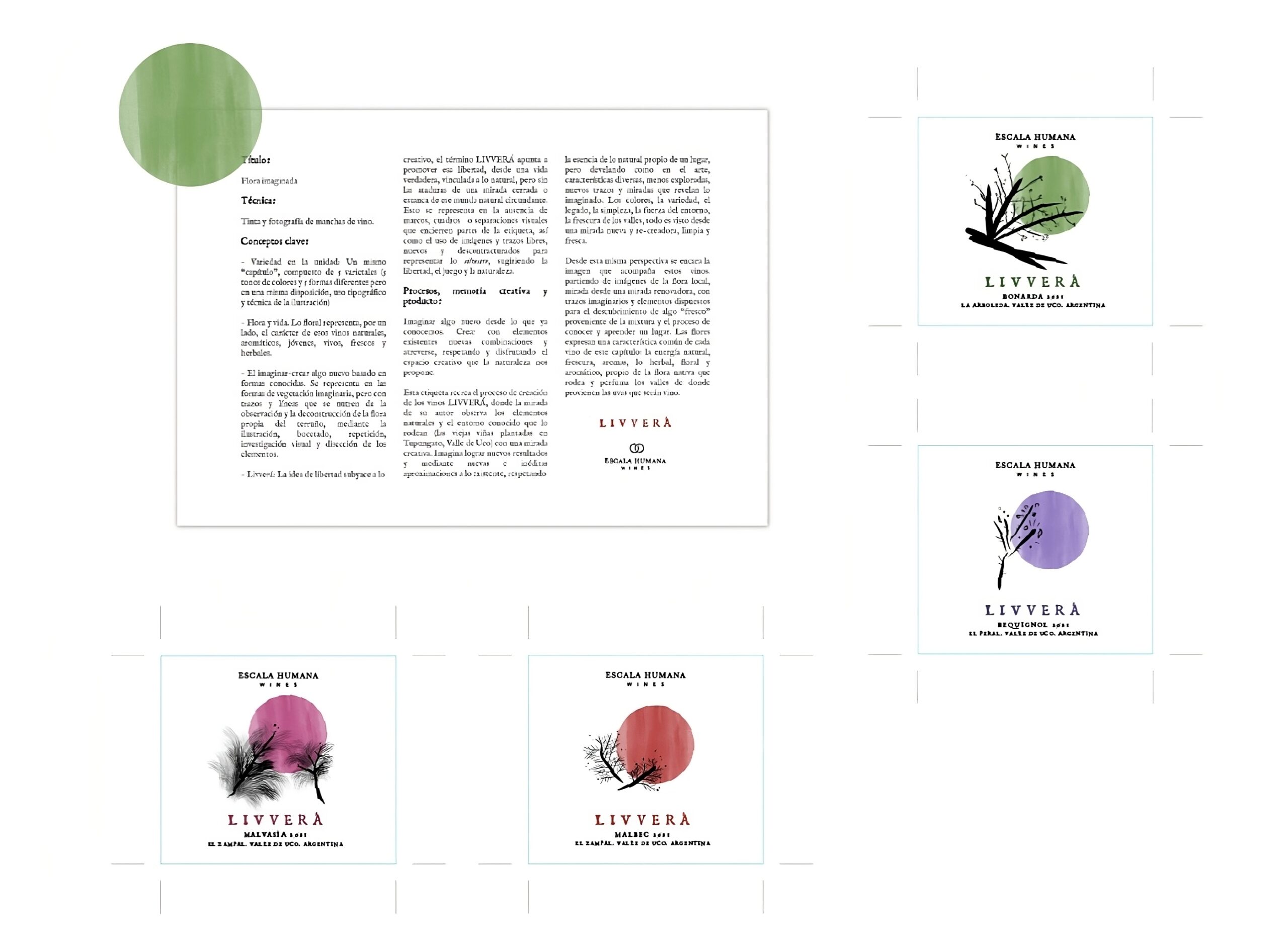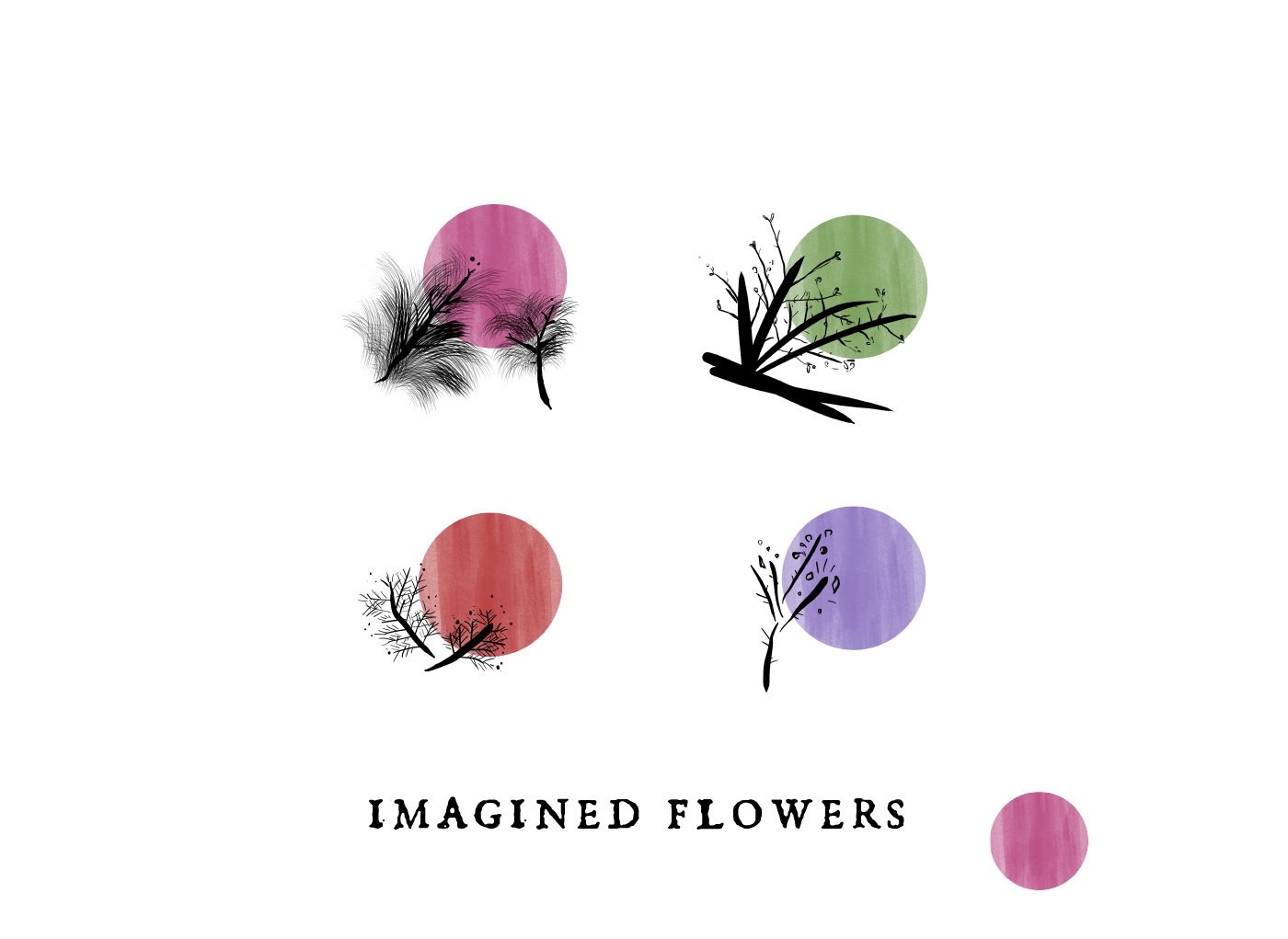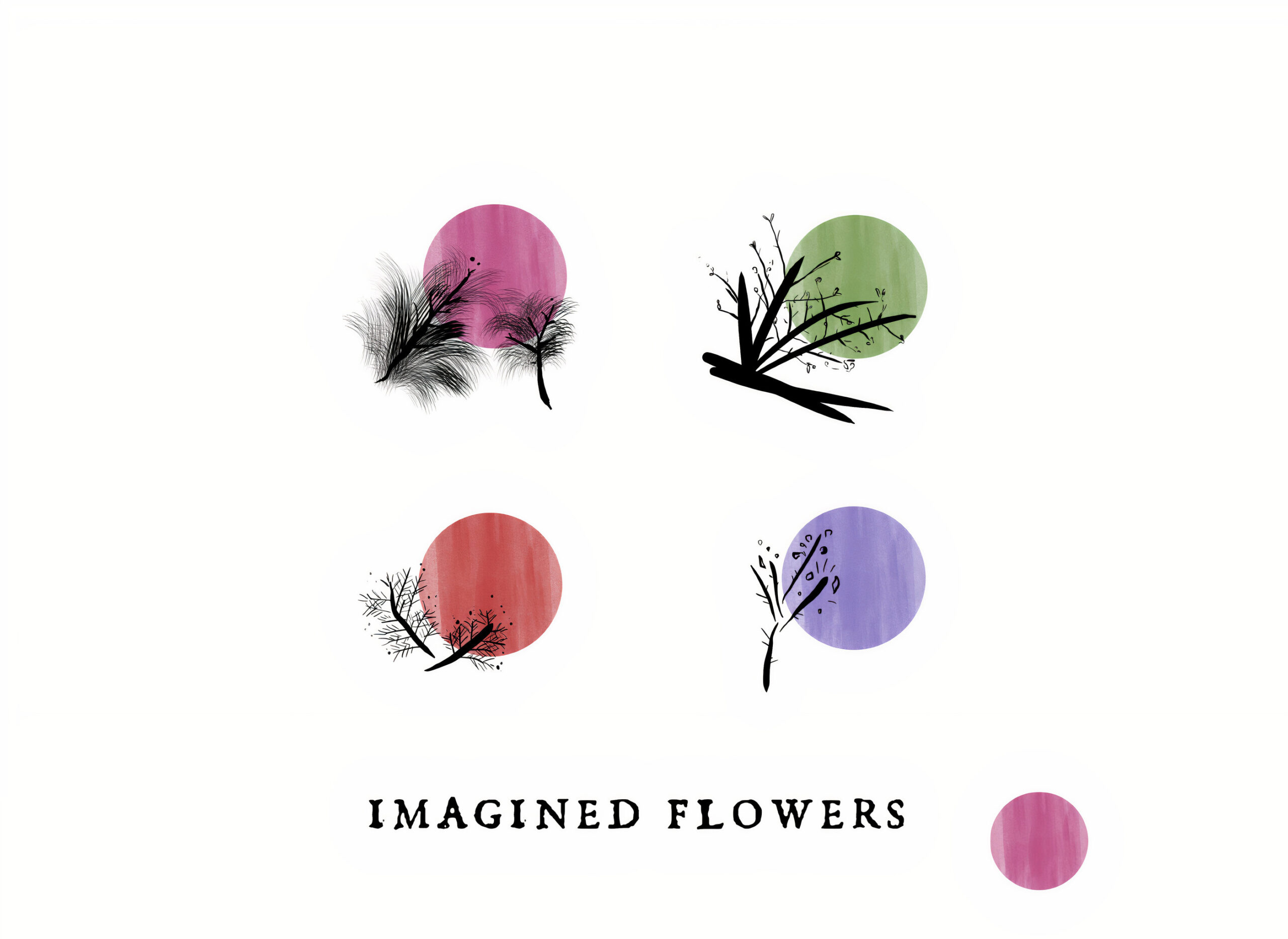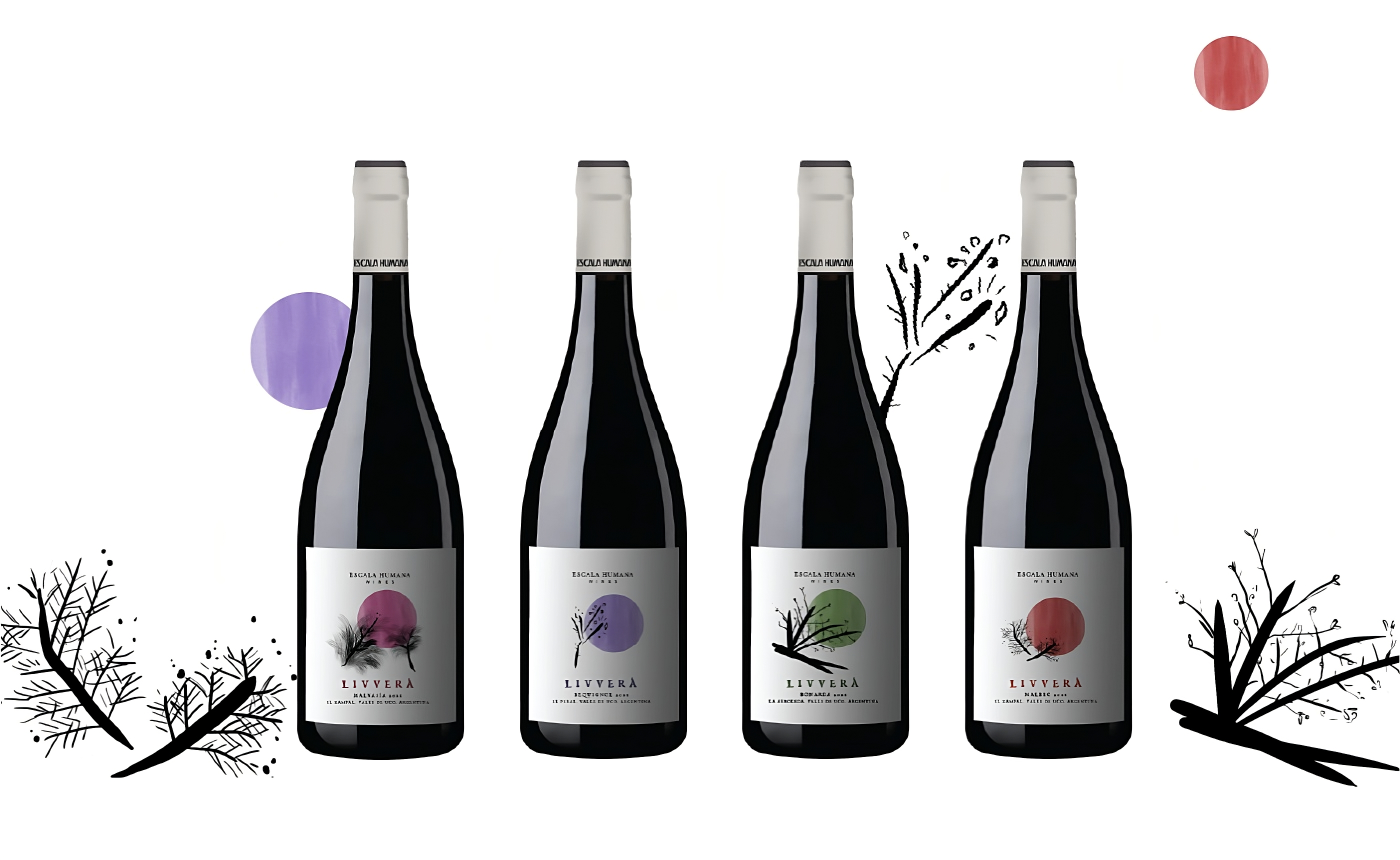Creative concept, illustration, market research, and design for visual branding and wine labels.
Tools
Ink and wine stain photography, Photoshop, Illustrator.
Key concepts
– Varietal in the unit: A same “chapter”, made up of 5 varietals (5 different color tones and 5 different shapes but in the same layout, typographic use, and illustration and illustration technique)
– Flora and life. The floral represents, on the one hand, on the one hand, the character of these natural wines, aromatic, young, lively, fresh, and herbal. herbal.
– Imagining-creating something new based on known forms. known forms. It is represented in the imaginary vegetation forms, but with strokes and lines and lines that are nourished by the observation and observation and deconstruction of the flora of the terroir, through illustration, sketching, repetition illustration, sketching, repetition, visual research, and dissection of the elements. elements.
– Livverá: The idea of freedom underlies the creative, the term LIVVERÁ aims to promote this freedom linked to life, to what is natural, but without the ties of a closed or stagnant of closed or stagnant view of the surrounding natural world. This is represented in the absence of frames, frames, or visual separations enclosing parts of the label, as well as the use of images and free strokes, to represent the wild, suggesting freedom, play, and nature.

Processes, creative memory, and product
Imagine something new from what we already know. Create new combinations with existing elements and dare, respecting and enjoying the creative space that nature offers us.
This label recreates the creation process of LIVVERÁ wines, where the author’s gaze observes the natural elements and the known environment that surround it (the old vineyards planted in Tupungato, Uco Valley) with a creative look. The winemakers imagine achieving new results through new and unprecedented approaches to what already exists, respecting the essence of the natural elements of a place, but revealing, as in art, diverse characteristics, less explored, new strokes, and glances that reveal what is imagined. The colors, the variety, the legacy, the simplicity, the strength of the environment, the freshness of the valleys, everything is seen from a new and re-creative, clean, and fresh look.
From this same perspective, the image that accompanies these wines is approached, starting from images of the local flora, seen from a renewing vision, with imaginative strokes and elements arranged for the discovery of something “fresh” coming from the mixture and the process of knowing and learning a place. The flowers express a common characteristic of each wine in this chapter: natural energy, freshness, aromas, herbal, floral, and aromatic, typical of the native flora that surrounds and perfumes the valleys from which the grapes that will be wine come.


